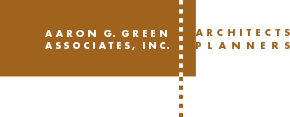Marin County, an enlightened community with the highest per capita income in California, is strenuously dedicated to the conservation of its natural beauty. It was clear to the architects and to the Housing Authority that the county would not tolerate the "institutional" architecture commonly associated with Federal housing. The site was one with a history of controversy, disfigured with the tattered remains of a temporary wartime housing project. In spite of the fact that the program required a density nearly twice that of the wartime remnants within the same area allocated, a project that would utilize the available land in such a way as to not destroy the natural beauty of the surrounding areas was definitely indicated. Believing that a community has a right to expect federal government projects in its midst be utilitarian without defacing the community, the architects designed the project with care and dedication.
Awarded First Honors in 1964 by the PHA in its "Honor Awards for Design Excellence" from among 700 entries. The Marin City development was regarded as outstanding by jurors who said "This highly original design meets the challenge of the site's topography and dramatic situation. Each floor of the hillside apartment buildings is accessible from grade without ramps or stairs. The buildings on the lower part of the site are intimate in scale, carefully detailed, and show a sensitive selection and use of materials."
Federal Housing Authorities stated that this project provided a "break-through" to better Federal Housing design.
Design: Mixed development of 132 units low-rise and 168 units high-rise housing on a 365 acre sloping site. The five-story hillside buildings each contain 21 two-bedroom units, plus a laundry room and storage area. Built of reinforced-concrete, they are one apartment wide with recessed private balconies located on the sides opposite the exterior entrance balconies. The grilled parapet of the balconies are precast concrete and hipped roofs are clay tile. The unique relationship to site topography provides the five-story building with parking and pedestrian access to each floor without need for an elevator. The two-story structures in the lower area of the site are constructed of integral colored concrete block for the ground level and wood framed above covered with redwood siding. The gable roofs are cedar shingled.

